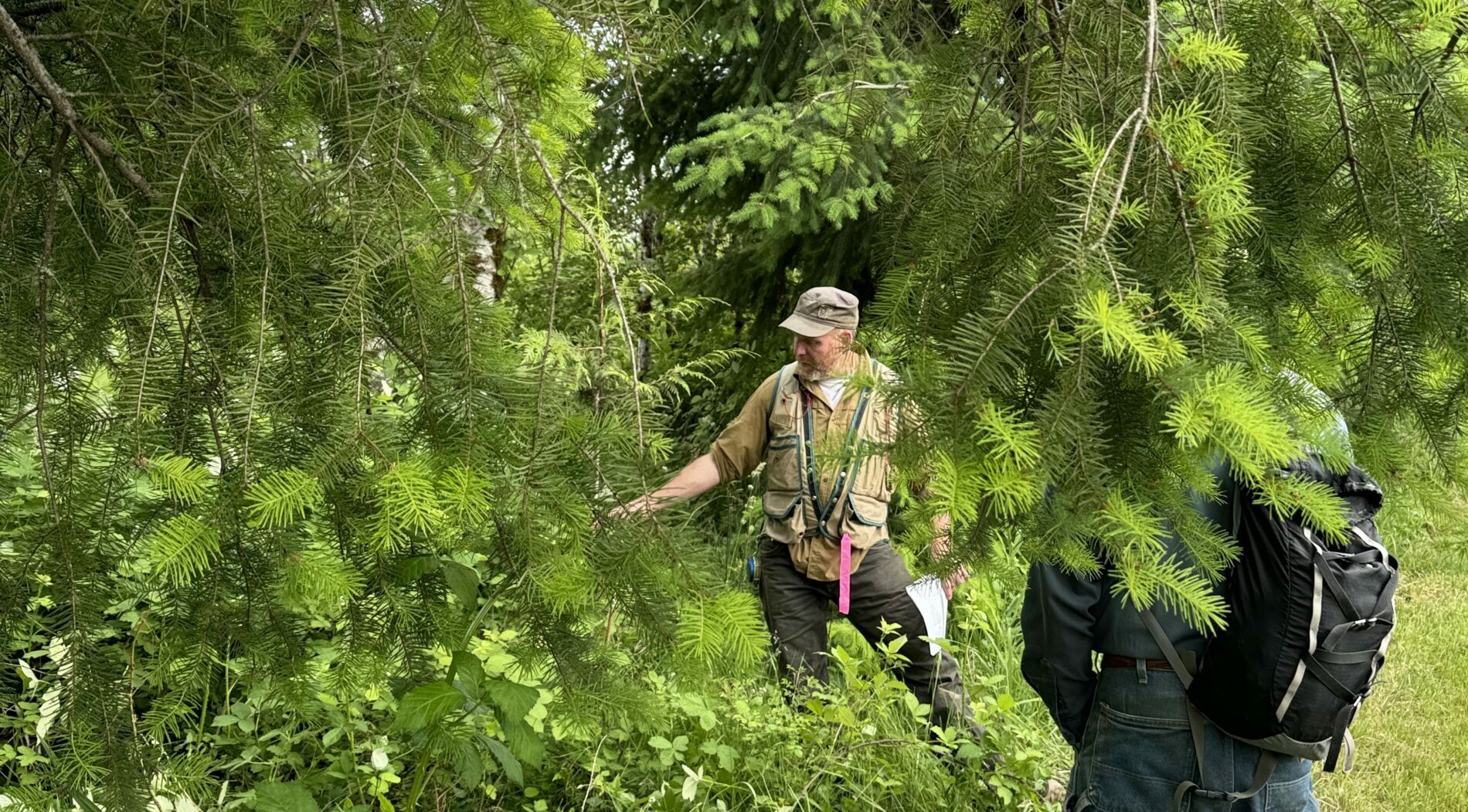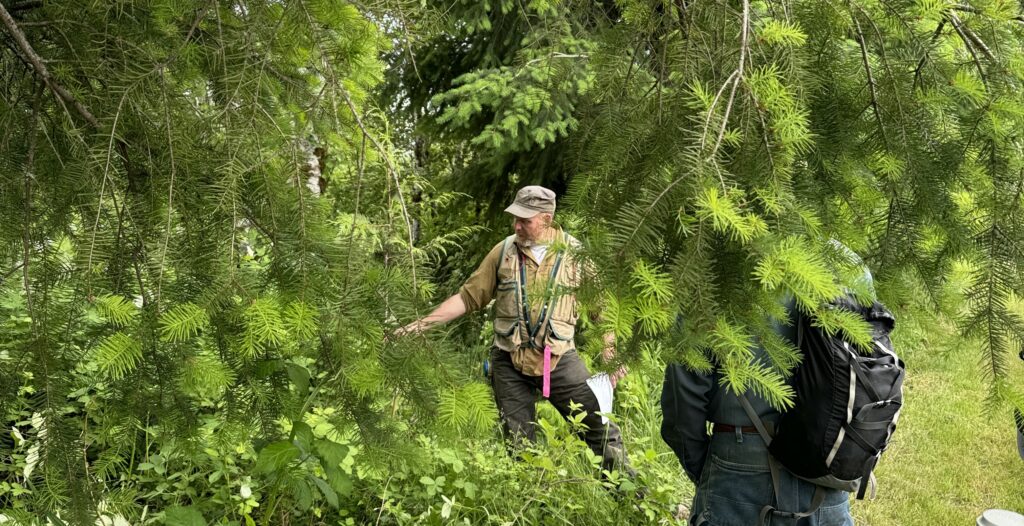Special Message Regarding USDA Funding for Small Woodland Owners

From Kirk Hanson, Director of Forestry
| Update: Thanks in part to the outcry from farmers and woodland owners, Secretary of Agriculture Brooke Rollins announced on Feb. 20 that the USDA will stand by its commitment to landowners whose projects in the Environmental Quality Incentive Program (EQIP) and the Conservation Stewardship Program (CSP) were funded by the Inflation Reduction Act. NNRG recommends you contact your local Natural Resource Conservation Service (NRCS) office to confirm this applies to your project. |
Late last week I learned that the USDA is pausing funding for some Environmental Quality Incentives Program (EQIP) and the Conservation Stewardship Program (CSP) projects due to the uncertainty surrounding federal funding for the agency and its programs. Specifically, EQIP and CSP contracts that were funded through the Inflation Reduction Act are temporarily frozen. However, EQIP and CSP contracts that were funded through the Farm Bill are still being honored at this time.
Both EQIP and CSP are reimbursement programs. This means that a forest owner or farmer must front the cost of all labor and materials, and then submit for reimbursement once the practices have been completed. If you’re a small woodland owner or farmer who has a current funding contract with the Natural Resource Conservation Service (NRCS), I highly encourage you to contact your NRCS planner immediately to determine the status of your funding contract. If you were planning to implement any practices this year, you have the option to modify your contract and delay the practice(s) until next year.
What Landowners and Forestry Advocates Can Do
This morning I spent an hour calling my two senators and my congressional representative, and left a message on the White House comment line, letting them know both the personal financial impact of this funding freeze, and the impacts to farmers and forest owners nationwide. I reminded them that the federal government has an obligation to honor funding contracts that it has already committed to, and that reneging on these contracts is illegal, and may be unconstitutional. If you feel similarly, I encourage you to do the same.
Here are some additional resources and information:
- How to contact your senators and congressional representatives: https://www.congress.gov/contact-us.
- White House comment line: (202) 456-1111
- Washington Post article on USDA funding freeze.
- Reuters article on USDA funding freeze.
- Reuters article on the illegality of the funding freeze.
The Personal Impacts of the Federal Funding Freeze
Over the past several years my family has applied for both EQIP and CSP funding for three different tracts of forestland we own. It has been our mission to acquire severely degraded land and gradually restore the land’s ability to provide a wide range of public benefits, including wildlife habitat, carbon sequestration, biodiversity, and sustained timber production. Nearly all of the federal funding we have received has gone directly to hiring local contractors and purchasing goods and materials from local suppliers. This funding directly supports local, natural-resource based economies and communities both in the short term, and in the long term as the health and productivity of rural lands is improved. Healthy and productive farms and forests improve our country’s resilience and independence as a whole.
Last year my family invested $10,000 in labor costs to have a portion of our forest pre-commercially thinned in order to improve timber quality. We were expecting to be reimbursed for this expense in 2025. This year we were poised to invest an additional $14,000 in tree planting to improve long-term timber production and carbon sequestration. However, when I reached out to my program officer at NRCS late last week, I learned that the funding for my contracts is frozen because it was coming from the Inflation Reduction Act, and I would not be reimbursed. $24,000 is a significant expense for a small woodland owner to personally finance, and we would not have undertaken these forest improvement projects without the guarantee of federal funding. I also recently received word from another small woodland owner who is a member of NNRG informing me that their EQIP contract is also temporarily frozen. They currently have a tree planting contractor planting a site on their land and are in jeopardy of losing $10,000 in federal support for their project as well.
A Bit of Kirk’s Philosophy on Federal Cost-share Funding
I understand and support the need to constantly scrutinize federal funding and seek greater efficiencies in how funding is allocated. However, good public policy calls for this process to be done thoughtfully and carefully with an eye for how changes will impact the recipients and beneficiaries of federal support. I personally find the current attempts to freeze federal funding arbitrary and capricious at best, and utterly aloof to the impacts it is having on rural farmers and communities across the country, who acted in good faith based on the promises made to them by an agency that until now has kept its word.
As an old teacher of mine once said “our goal is a sustainable future, not a subsidized one”. Accordingly, I look at EQIP and CSP funding as a short-term subsidy meant to make improvements in farm and forest management. In my experience, most forestry issues can be corrected during the five-year window of an EQIP or CSP contract, after which time the forest should be capable of supporting its own ownership and management costs, if not provide immediate dividends back to the landowner and society as a whole. Given the scale of forest health issues that many forest owners face, and the challenges of financing restoration practices out-of-pocket, EQIP and CSP present a valuable opportunity to improve the quality of our farms and forests that may not otherwise occur.
Kirk Hanson
Director of Forestry
Northwest Natural Resource Group
kirk@nnrg.org


Leave a Reply